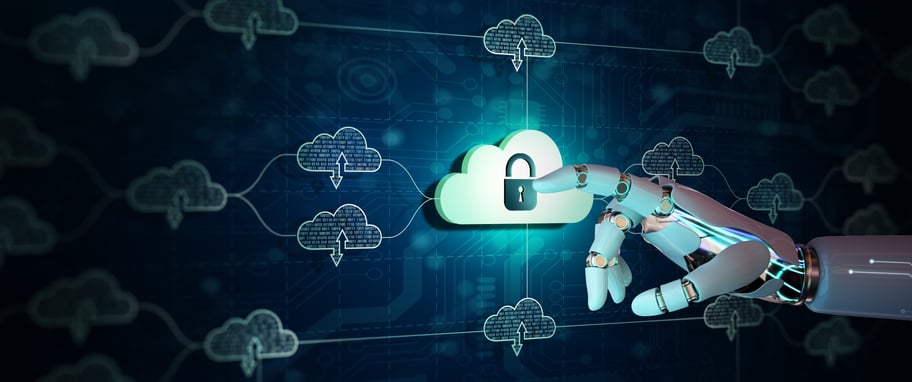3 min read
The Remote Revolution: How Technology Keeps Us Connected
The swift transition to remote work has not only reshaped our daily lives but also underscored the critical importance of reliable remote access...
3 min read
 The Amazing Team at Force One
:
Mar 20, 2024 12:38:19 PM
The Amazing Team at Force One
:
Mar 20, 2024 12:38:19 PM
Have you ever wondered how the invisible threads of the internet and network applications tie our digital world together? It's like stepping into a bustling city where every building serves a unique purpose. From web and email services that act as the city's communication hubs to the file/print and database services that function as the backbones of its infrastructure—each plays a crucial role in the digital landscape. Let’s embark on a journey to uncover the essentials of network applications, making it as simple as enjoying your favorite coffee. Whether you're just curious or looking to expand your digital know-how, this guide is just what you need!
The Cornerstones of the Digital City
1. Web Services: Imagine walking into a vast library where you can access any book or resource in an instant. Web services are the digital equivalent, enabling our browsers to request and display websites from servers across the globe. They are the architects of our online experiences, from streaming your favorite shows to online shopping adventures.
2. File/Print Services: These services are the unsung heroes of the office world, managing the flow of documents and enabling seamless sharing and printing across a network. Picture a bustling marketplace where files are traded freely, ensuring that the right document gets to the right person at the right time, without the need for a physical courier.
3. Database Services: The city's vaults, safeguarding valuable data treasures. Whether it's your favorite online store keeping track of inventory or a social media platform managing user profiles, database services ensure that data is stored, organized, and retrieved efficiently, keeping the digital city's heart beating.
4. Email Services: The postal system of our digital city, delivering messages across the world in the blink of an eye. Email services have revolutionized how we communicate, allowing us to send letters, postcards, and parcels (attachments) without ever needing a stamp.
5. Voice Services: The city's phone lines, connecting voices across continents. From traditional phone calls to modern VoIP (Voice over Internet Protocol) services, they enable real-time voice communication over the internet, making the world feel a little smaller and more connected.
6. Communication Tools: The city squares and coffee shops where people gather to chat, collaborate, and share ideas. Tools like instant messaging, video conferencing, and collaboration platforms are the lifeblood of modern businesses and personal connections, enabling teamwork and camaraderie without borders.
Each service, from web to voice, plays a pivotal role in keeping our digital lives running smoothly. It's a world that's constantly evolving, and staying informed helps us navigate it with confidence. So, whether you're a seasoned digital navigator or just starting out, there's always something new to discover in the vast, interconnected landscape of network applications. Happy exploring!
Also Read: Defending Against Ransomware: A Guide to Vulnerability Management
If you're interested in more job tips and ways to advance your career in the cybersecurity field, check out more details at ForceOne Cybersecurity. Together, we can build a safer digital future.
FAQs
Not at all! These services are designed to be user-friendly, making it easy for anyone to navigate the digital ecosystem. Whether you're sending an email or streaming a movie, intuitive interfaces guide you through.
File/print services on a home network allow you to share files and access printers from any device connected to your network. It’s like having a mini-office setup where you can print from your laptop in the living room to the printer in your study, hassle-free.
Web services are generally safe, but it’s important to practice good digital hygiene. This includes using strong passwords, avoiding suspicious links, and keeping your software up to date to protect against vulnerabilities.
Yes, you can set up a personal email server, but it requires some technical know-how. It gives you control over your email services, but also comes with responsibilities like ensuring security and managing spam.
VoIP offers flexibility and cost savings, especially for international calls. Since it uses the internet, you can make calls from any device, like your smartphone or laptop, often at a fraction of the cost of traditional services.

3 min read
The swift transition to remote work has not only reshaped our daily lives but also underscored the critical importance of reliable remote access...

4 min read
Hello, fellow internet wanderers and enthusiasts! Ever found yourself pondering over the magic that happens behind the scenes every time you enter a...

3 min read
In the swiftly evolving landscape of cyber security, keeping ahead of threats is a constant challenge for organizations worldwide. With the...